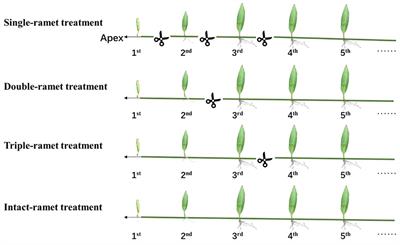Effects of clonal fragmentation on Pyrrosia nuda depend on growth stages in a rubber plantation
Introduction: Clonal fragmentation helps to assess clonal plants' growth resilience to human and environmental disturbance.

Although clonal integration in epiphytes in tropical rubber plantations is important to understand their role in enhancing biodiversity and ecosystem services, research on this subject is limited.
These plantations are typically monospecific economic forests that face increased anthropogenic disturbances. Methods: In this study, we selected the clonal fern Pyrrosia nuda to study its survival status, biomass, maximum quantum yield of photosystem II (Fv/Fm), and frond length in response to the level of clonal fragmentation in a tropical rubber plantation. Results and discussion: The results showed that (1) clonal fragmentation significantly negatively affected the survival rate, biomass, and frond length of clonal plants, but with minimal effects on Fv/Fm at different growth stages; (2) the performance of a ramet (e.g., biomass or frond length) increased with ramet developmental ages and decreased with the number of ramets in a clonal fragment.
The age-dependent impacts of clonal fragmentation provide insights into the biodiversity conservation of epiphytes and forest management in man-made plantations.
Therefore, to better conserve the biodiversity in tropical forests, especially in environment-friendly rubber plantations, there is a need to reduce anthropogenic disturbances and alleviate the level of fragmentation.
Read the full article at the original website
References:
